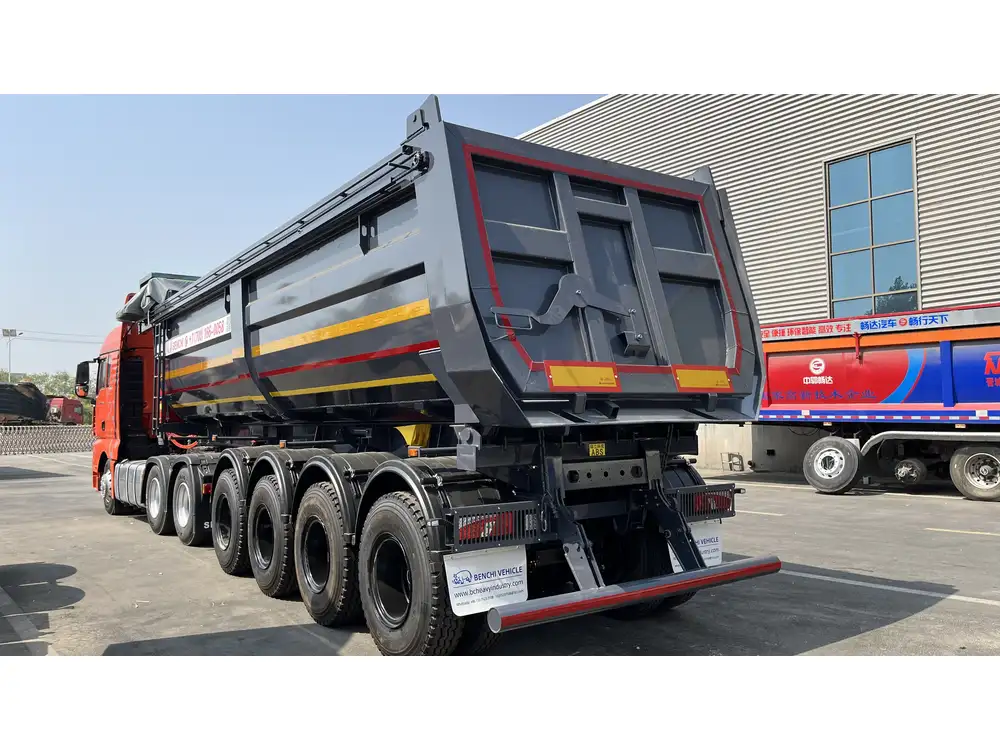In the realm of heavy-duty transport, flatbed trailers epitomize versatility and efficiency. Amongst the various configurations of trailers, the 48-foot flatbed stands as a popular choice for freight transport across various industries. When planning transportation logistics, understanding the precise dimensions of your equipment is paramount. Specifically, let us delve into the critical question: how wide is a 48 flatbed trailer?
Dimensions and Standardization of Flatbed Trailers
General Specifications
A 48-foot flatbed trailer is characteristically 8.5 feet (102 inches) wide when loaded according to federal regulations. This width includes side rails that are standard on many flatbed models. Width regulations are crucial in ensuring that the trailer is compliant with road safety laws, thus preventing accidents and ensuring smooth transit.

Comparison of Trailer Widths
| Trailer Type | Width (Inches) | Width (Feet) |
|---|---|---|
| 20-foot Flatbed Trailer | 96 (8) | 8 |
| 40-foot Flatbed Trailer | 102 (8.5) | 8.5 |
| 48-foot Flatbed Trailer | 102 (8.5) | 8.5 |
| 53-foot Flatbed Trailer | 102 (8.5) | 8.5 |
This table illustrates that while 20-foot trailers have a shorter length and the same width, the scale and hauling capacity of a 48-foot trailer are much more substantial, allowing it to transport bulkier loads efficiently.
Measurement Categories
Considering the overall dimensions, it is also vital to note:
- Overall Width: The total distance from one outermost side rail to the other, typically about 102 inches for legal loads.
- Deck Width: The width of the platform itself can sometimes be slightly less due to the thickness of the side rails or equipment mounted alongside the trailer.
A Comprehensive Breakdown of Flatbed Trailers

Types of Flatbed Trailers
There are several configurations of flatbed trailers, but we’ll focus primarily on the 48-foot variant.
- Standard Flatbed Trailer: Known for its strength and ability to tackle diverse freight, it lacks sides or a roof, providing flexibility for oversized loads.
- Step Deck Trailer (Drop Deck): Features a lower deck height, making it suitable for taller loads that wouldn’t fit under standard bridge heights.
- Double Drop: Incorporates two drops that provide extra height clearance at the center.
Importance of Width in Cargo Transportation
Understanding the width of a 48-foot flatbed trailer is not merely for compliance but is instrumental in various logistical considerations:
- Operational Compliance: Adhering to highway regulations is crucial. Most states in the U.S. and provinces in Canada permit a maximum of 8.5 feet width for standard loads without special permits.
- Load Stability: Wider footprints can enhance stability during transit, minimizing the risk of shifting cargo.
- Weight Distribution: It allows for distributed weight management across axles, promoting overall safety and efficiency.
Regulations and Legal Aspects

Considerations for Oversized Loads
For loads exceeding the standard width, specific regulations come into play:
- Permit Requirements: Loads wider than 8.5 feet typically require special permits. Each state has its own regulations detailing permissible dimensions and circumstances.
- Flagging and Signage: Depending on the load size, additional signage, lights, or escort vehicles may be obligatory to ensure visibility and compliance.
Federal and State Regulations: Key Takeaways
- Federal Standard: The Federal Highway Administration mandates a maximum trailer width of 8.5 feet for interstate travel.
- Local Variances: Always check local laws as states may have different regulations, especially concerning construction or agricultural loads.
Strategic Utilization of a 48-foot Flatbed Trailer

Load Types Compatible with 48-Foot Trailers
A diverse array of cargo can be effectively hauled on a 48-foot flatbed trailer:
- Construction Materials: Steel beams, lumber, and heavy machinery are common cargo types.
- Heavy Equipment: Trailers can accommodate excavators, bulldozers, and other construction machinery.
- Over-Dimensional Freight: Perfect for transporting wider goods that require careful maneuvering.
Safety Measures for Flatbed Trailer Operations
Best Practices
Proper Tie-Down Techniques:
- Use chains or straps that are appropriately rated for the weight of your cargo.
- Employ edge protection devices to prevent damage to the securing equipment and load.
Regular Inspections:
- Check for wear and tear on securing systems, the trailer structure, and tires to maintain safety and functionality.
Load Distribution:
- Distribute weight evenly across the trailer to adhere to axle limits, enhancing stability and minimizing road wear.

Conclusion: Making Informed Trailer Choices
In essence, understanding the nuances of a 48-foot flatbed trailer, particularly its width, is fundamental for logistics planning and compliance with regulatory standards. With a standardized width of 102 inches, it caters excellently to a wide range of freight services, from maneuvering around metropolitan delivery routes to extensive cross-country hauls.
The information presented herein serves as a guide for shippers, carriers, and equipment managers aiming to optimize their operations effectively.
Frequently Asked Questions (FAQs)
Q1: Can I legally carry loads wider than a 48-foot flatbed trailer?
A1: Yes, but you must receive the appropriate permits and adhere to safety regulations.
Q2: What types of cargo are best suited for a flatbed trailer?
A2: Flatbed trailers excel in transporting heavy equipment, lumber, steel, and oversized loads not requiring enclosures.
Q3: Are there trailer alternatives for specialized loads?
A3: Yes, step deck and double drop trailers are better suited for over-height or over-dimensional cargo.
Q4: How do I ensure load stability on a flatbed trailer?
A4: Properly secure loads using chains, straps, and edge protection, and distribute weight evenly across the trailer.
Call to Action
For those engaged in the logistics, construction, or heavy equipment industries, it is critical to choose flatbed trailers that meet regulations while adequately serving your transport needs. A thorough understanding of dimensions, alongside proactive management and compliance with state regulations, ensures your operations run smoothly.
When considering your next transport solution, reach out for expert guidance and premium options that enhance your logistics efficiency. Explore our extensive inventory of tailored flatbed trailers today!



